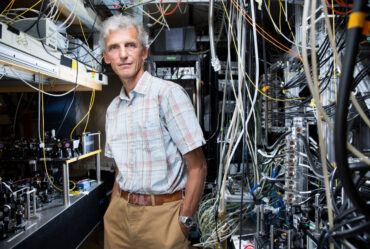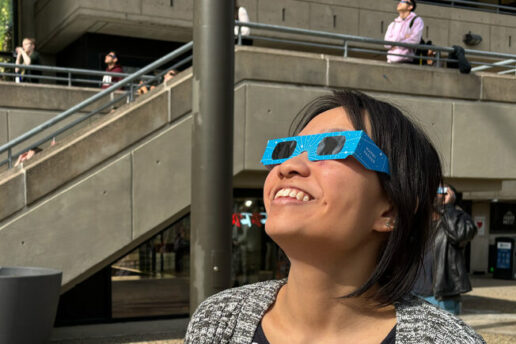
MIT community members gather on campus to witness 93 percent totality
Hundreds of observers took advantage of great weather to view the 2024 partial eclipse.
The stars and other celestial objects truly aligned on MIT’s campus Monday. After a weekend of rain, the community was treated to clear skies and high temperatures to view the only partial eclipse for the next 20 years.
Community members took in the interstellar anomaly in gatherings large and small. Although many traveled north to view the full eclipse, those in Greater Boston were treated with 93 percent coverage and ample ways to appreciate the cosmic wonder.
As the moon met the sun beginning around 2:15 p.m., Kresge Oval hosted crowds of onlookers, with staff members handing out solar filters of various types and encouraging star-struck viewers to sketch what they saw and tell stories. The event was hosted by the MT Edgerton Center and inspired by the seminar EC.050/090 (Recreate Experiments from History: Inform the Future with the Past).
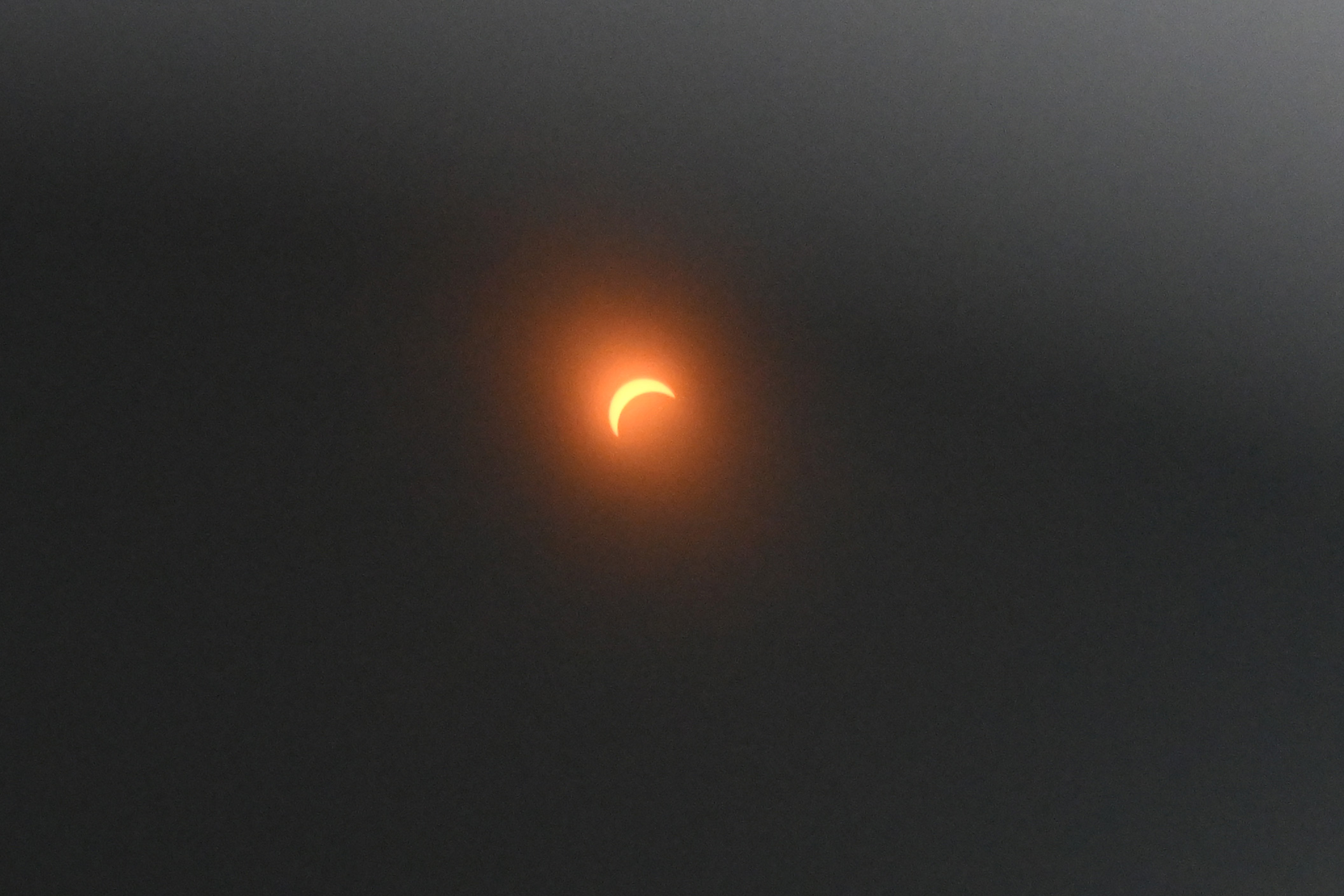
Photo: Sarah Foote
On the other side of campus, the MIT Museum also hosted a gathering that included a full afternoon of programming. Attendees could hear from an astronomer and ask questions while they took in the views with solar filter glasses.
In Building 55, home to the Department of Earth, Atmospheric, and Planetary Sciences (EAPS), where the lives of stars take up a bit more headspace each day, sights and sounds from NASA’s livestream appeared on the department’s large new media wall.
Each of the gatherings could have been a scene out of a science fiction movie as everyone donned their glasses and looked up in amazement at the darkening sky. Those with extra eyewear to share quickly found themselves with new friends to experience the moment with.
“The Edgerton Center is really about building communities, and this was an opportunity to get the MIT community together to observe this thing that rarely happens and have some conversations about what’s really going on,” said Jim Bales, the associate director of the Edgerton Center.
Such events have evoked fear and confusion in Earthlings throughout history, but this time, MIT’s community members seemed more prone to appreciative reflection. Many students, faculty, and staff took a break from terrestrial life to take in the rare natural phenomena, a welcome planetary disruption to an otherwise typical Monday on Earth.
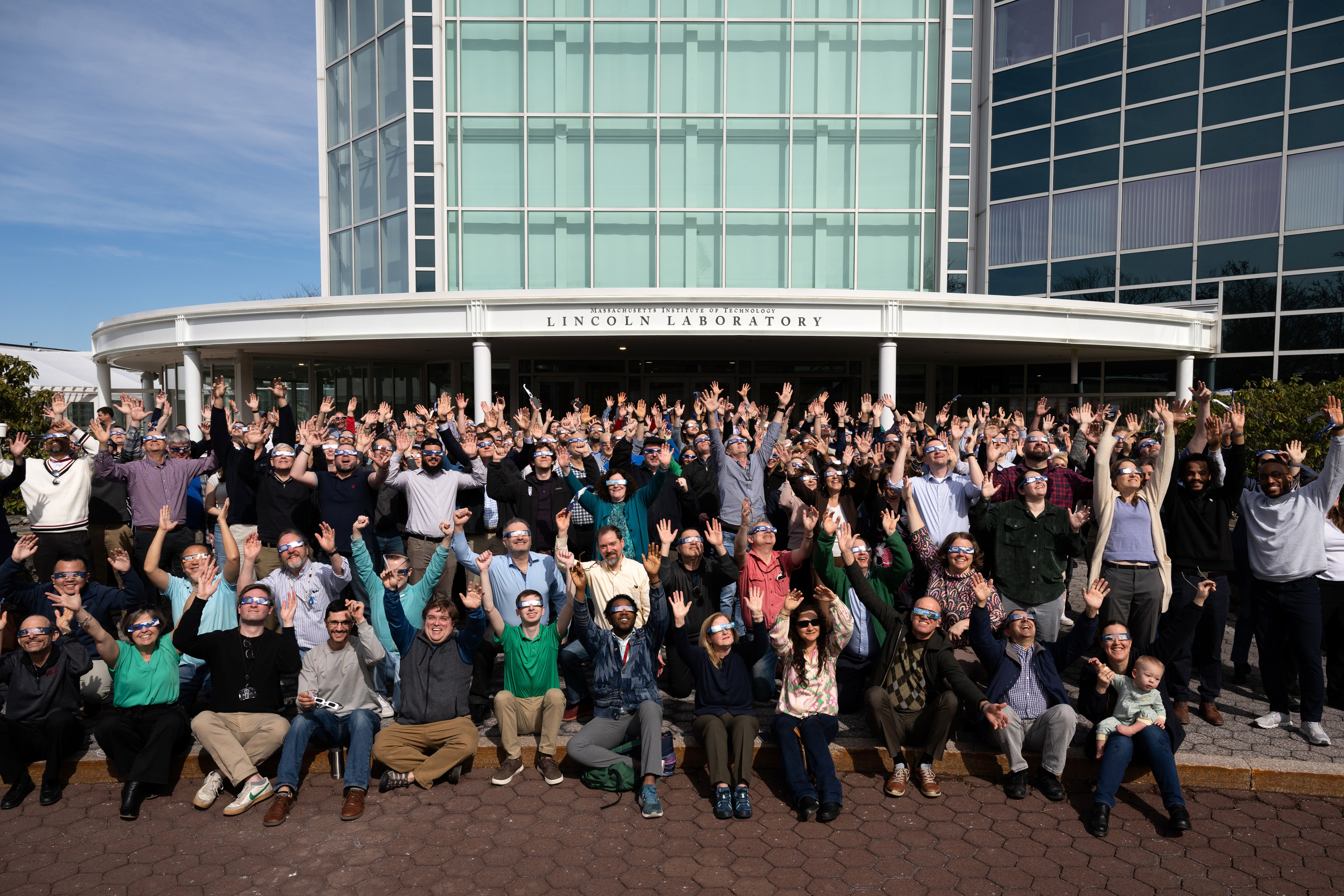
Photo: Nicole Fandel
“Watch parties are cool because you’re learning from what other people have to say about it and you get to meet new people,” said sophomore Sol Roberts. “You can only stare up for so long, but being with other people it makes it more enjoyable.”
Of course, MIT didn’t abandon its scientific bent entirely. The community, after all, was never going to stop helping humanity understand the fundamental workings of the universe. Myriad community members participated in professional and citizen science initiatives of one sort of another. Meanwhile, MIT’s Haystack Observatory in Westford, Massachusetts measured changes in the atmosphere, and members of the Department of Physics took measurements of the sun’s intensity using the shiny new radio telescope on the roof of Building 54.
As surreal as the skies appeared, the Earth’s surface offered equally fun sights. The gatherings made the eclipse at once an intergalactic event and a hyper-local one, an impossibly distant astronomical anomaly shared between friends.
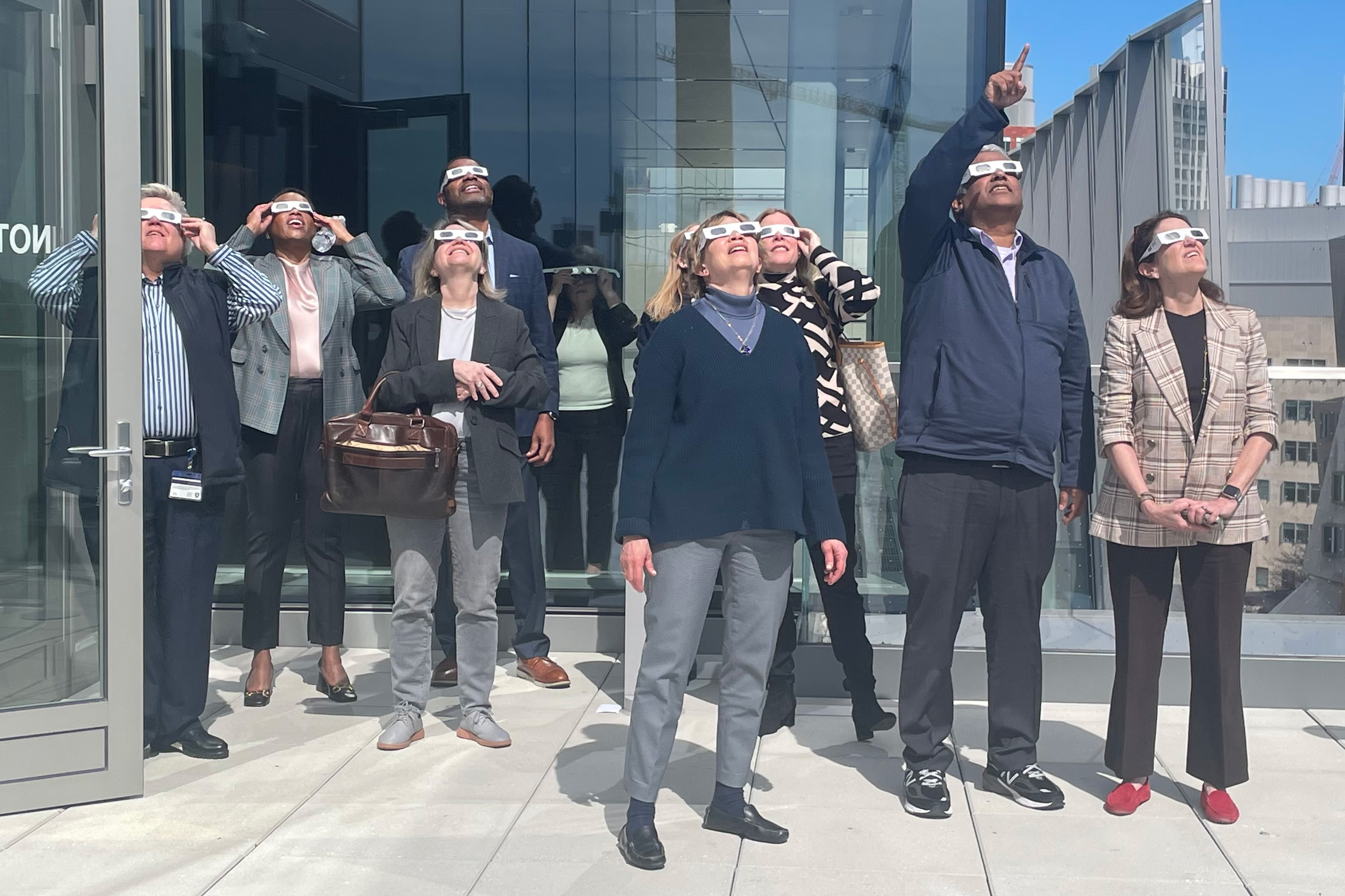
Photo: Martha Eddison Sieniewicz

